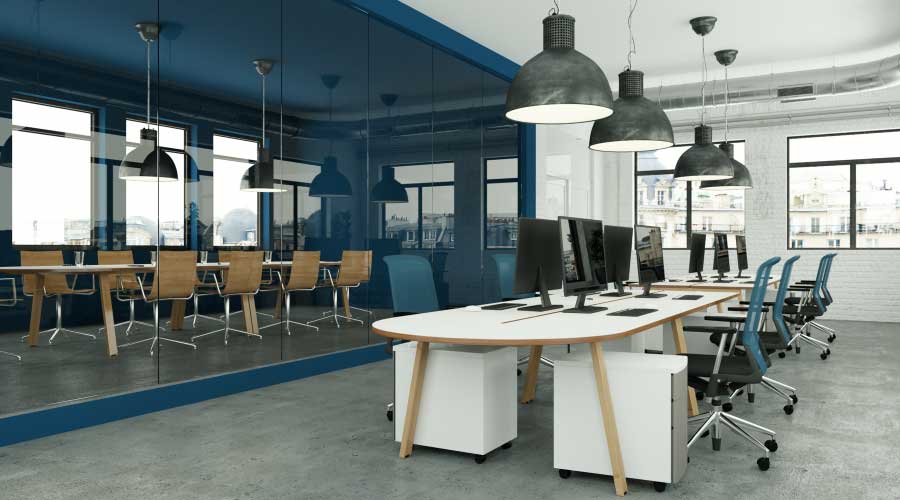Wireless Systems Add Capabilities, Benefits for Lighting Controls
Wireless technology and the Building Internet of Things (IoT) bring together a large number of data points and makes it easier for devices to communicate, giving FMs flexibility and control.
Early-generation control systems were difficult and expensive to install. For many applications, particularly those involving dimming, fixtures had to be changed, and dedicated wiring had to be installed to each fixture. Installation of bi-level lighting systems usually involved running a second circuit to the fixtures. These requirements made the systems more difficult and expensive to implement.
Today, fixtures are available with integrated sensors, either wired or wireless. Wireless is becoming the system of choice in both new and existing buildings.
Wireless system controllers communicate with various devices using radio frequency signals, eliminating the need for expensive dedicated control wiring. The result is lower installation costs and greater flexibility. Fixtures can be relocated or new fixtures added to the system without having to install new control wiring. The systems are particularly cost effective for retrofitting into installations where it would be difficult or impossible to install control wiring. Typical installation costs are one third to one half of those of hard wired systems.
Wireless systems have a typical range of about 100 feet, depending on the type of construction. The range can be extended through the use of repeaters. The more sophisticated systems operate on a mesh network that passes the control signal from one controlled device to the next, using multiple pathways for redundancy. Mesh networks can greatly expand the range of wireless systems without the need for installing repeaters.
The development of standards and open-source protocols has opened up the systems to a growing level of interoperability, improving system flexibility and pricing.
Another developing technology that has great promise to improve lighting system operation is the Building Internet of Things (IoT). The goal of the Building IoT is to bring together a large number of data points through the Internet using the TC/IP protocol. With this standard, it will be much easier to have devices communicate with a central management platform or even each other than is currently achievable with traditional BAS and EMS technologies.
Lighting systems will be able to do much more than just provide light. Information feedback from individual light fixtures can provide information that can be used to improve the operation of other building systems, such as HVAC systems. For example, if a Building IoT-based lighting control system senses that certain areas are occupied or unoccupied, that information could be used to automatically adjust HVAC operation.
Beyond energy conservation, other benefits of lighting controls include extended lamp life and improved light quality.
Additional benefits
While energy conservation is the most frequently cited goal for a lighting control system, there are additional benefits. One of these is life of the light source. Reducing the number of operating hours that the light source operates extends its service life. The rated life of light sources, particularly fluorescent lamps, is based on a set number of hours of operation per start. More frequent starts generally means shorter hours of operation per start, but this is more than offset by the reduction in total hours of operation. The result is less frequent replacement of the lamps. The service life of LED bulbs does not appear to be impacted by more frequent starts.
Another benefit of a well-designed lighting control system is the quality of light produced. Lighting control systems allow facility managers to provide optimal lighting based on the needs of that particular area. If the activities in the area change, the control system parameters can be changed to meet the needs of those new activities, often without having to change fixtures or light sources. Lighting control systems allow facility managers to provide the light that is needed where it is needed and when it is needed while minimizing lighting energy use.
James Piper, PhD, PE, is a writer and consultant who has more than 35 years of experience in facilities management. He is a contributing editor for Building Operating Management.
Email comments to edward.sullivan@tradepress.com.
Related Topics:














